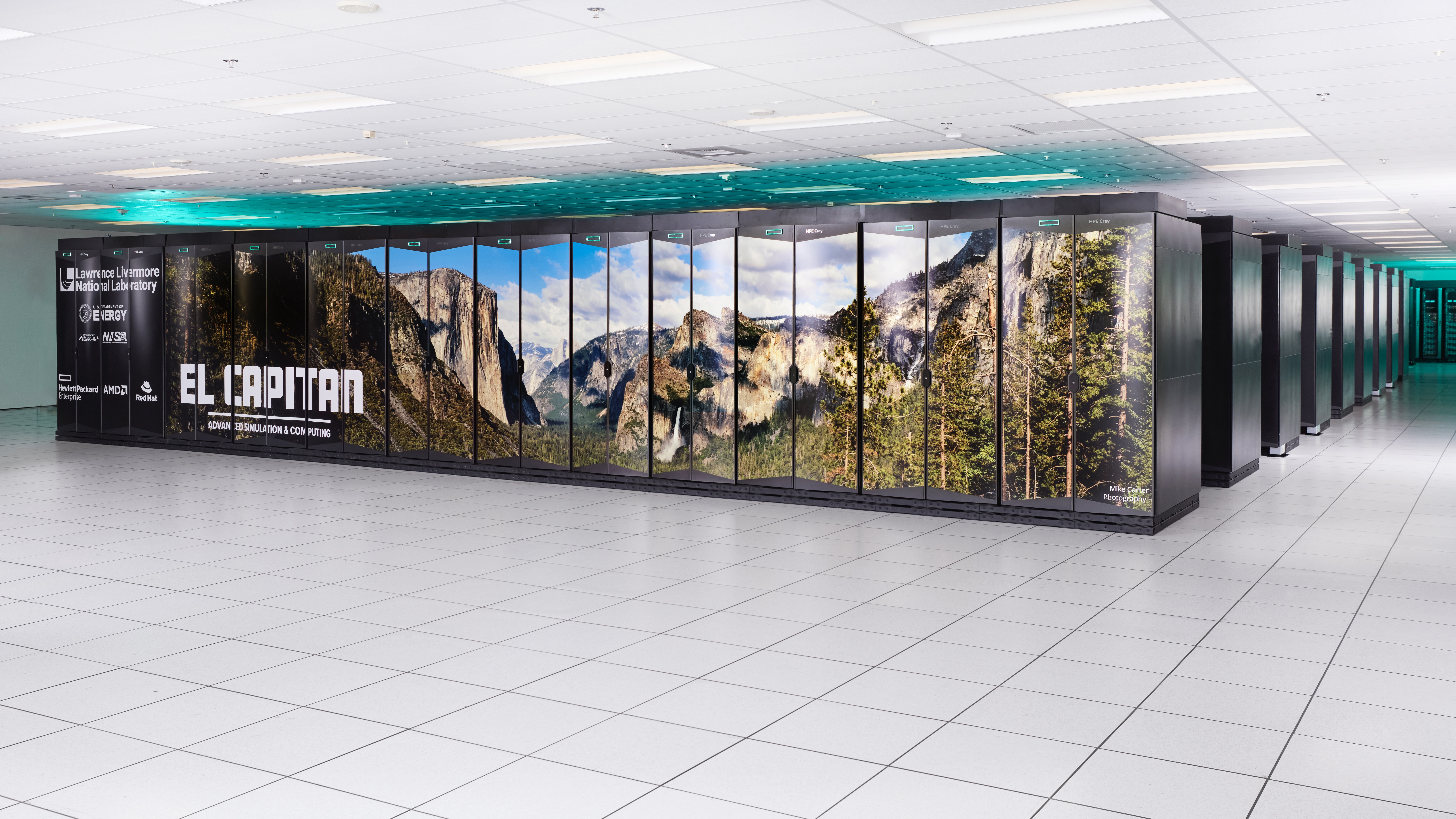World's fastest supercomputer 'El Capitan' goes online — it will be used to secure the US nuclear stockpile and in other classified research
The world's fastest supercomputer 'El Capitan' can reach a peak performance of 2.746 exaFLOPS, making it the planet's third exascale computer.

The fastest supercomputer in the world has officially launched at the Lawrence Livermore National Laboratory (LNNL) in California.
The supercomputer, called "El Capitan," cost $600 million to build and will handle various sensitive and classified tasks including securing the U.S. stockpile of nuclear weapons in the absence of underground testing, according to LNNL representatives. This was prohibited in 1992.
Research will primarily be focused on national security, including material discovery, high-energy-density physics, nuclear data and weapon design, as well as other classified tasks.
Construction on the machine began in May 2023, and it came online in November 2024, before being officially dedicated on Jan. 9.
Related: The 9 most powerful supercomputers in the world right now
El Capitan became the world's fastest computer when it became fully operational last year with a score of 1.742 exaFLOPS in the High-Performance Linpack (HPL) benchmark. This is a test used to judge supercomputing speeds all over the world. This makes El Capitan only the third computer ever to reach exascale computing speeds. It has a peak performance of 2.746 exaFLOPS.
Performance is measured in floating-point operations per second (FLOPS), where one floating-point operation is a mathematical calculation. Although like-for-like comparisons are tricky, the best laptops usually deliver several hundred gigaFLOPS of power — that’s 1 trillion (10^9) FLOPS. An exaFLOP is 1 quintillion (10^18) FLOPS.
Sign up for the Live Science daily newsletter now
Get the world’s most fascinating discoveries delivered straight to your inbox.
The next fastest supercomputer in the world is currently the Frontier supercomputer at Oak Ridge National Laboratory in Tennessee. That supercomputer has achieved a standard performance of 1.353 exaFLOPS with a peak of 2.056 exaFLOPS.
El Capitan is powered by just over 11 million processing and graphics cores packed into 44,544 AMD MI300A accelerated processing units — chips that combine AMD EPYC Genoa CPUs, AMD CDNA3 graphics cards and computing memory — according to Next Platform. Each uses 128 gigabytes of high-bandwidth memory — a special type of computing memory that achieves high speeds while consuming less power — shared across central processing unit and graphics processing unit chiplets.
El Capitan was commissioned by the U.S. Department of Energy's CORAL-2 program to replace the Sierra supercomputer, deployed in 2018. This supercomputer is still in use and was the 14th most powerful supercomputer in the latest Top500 rankings.

Keumars is the technology editor at Live Science. He has written for a variety of publications including ITPro, The Week Digital, ComputerActive, The Independent, The Observer, Metro and TechRadar Pro. He has worked as a technology journalist for more than five years, having previously held the role of features editor with ITPro. He is an NCTJ-qualified journalist and has a degree in biomedical sciences from Queen Mary, University of London. He's also registered as a foundational chartered manager with the Chartered Management Institute (CMI), having qualified as a Level 3 Team leader with distinction in 2023.









